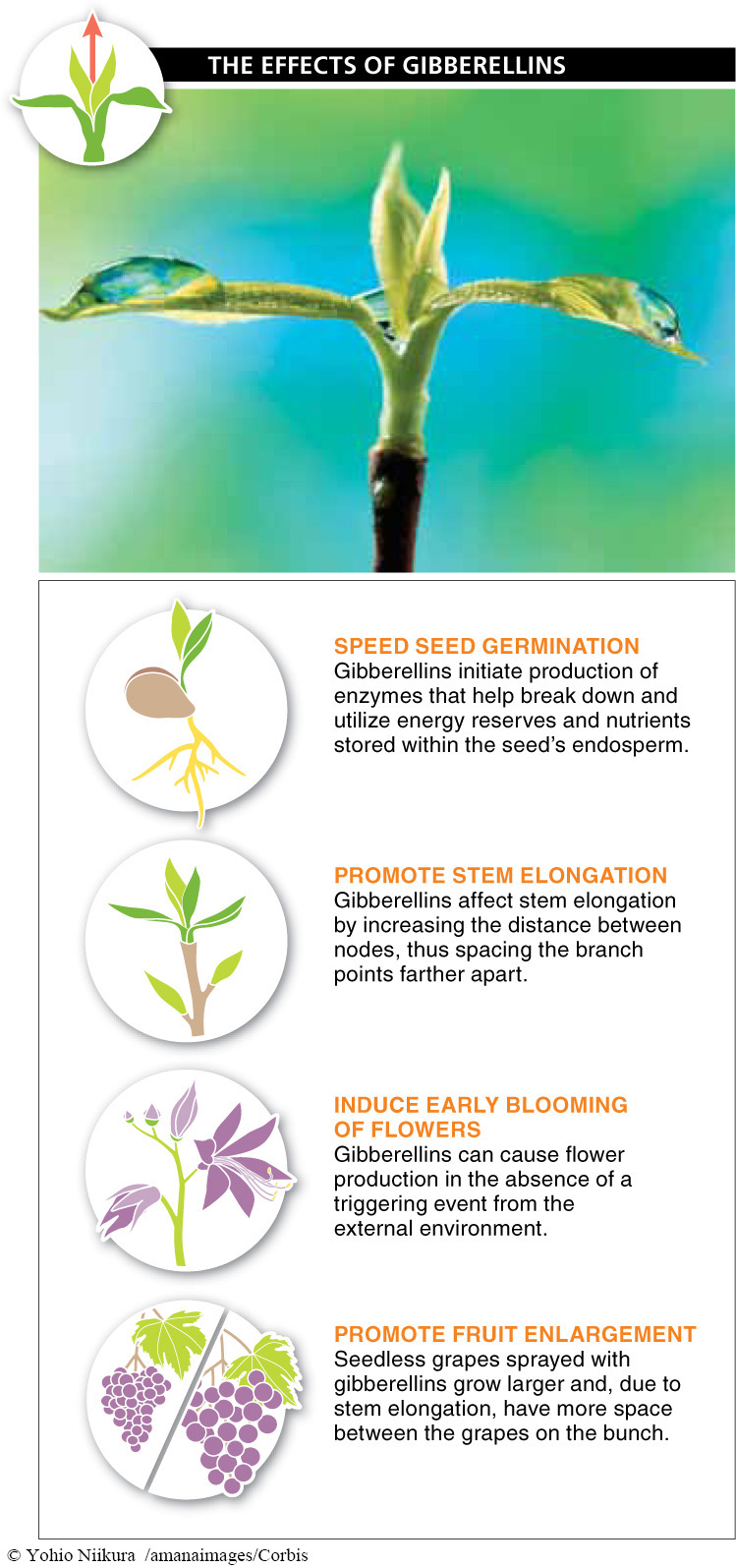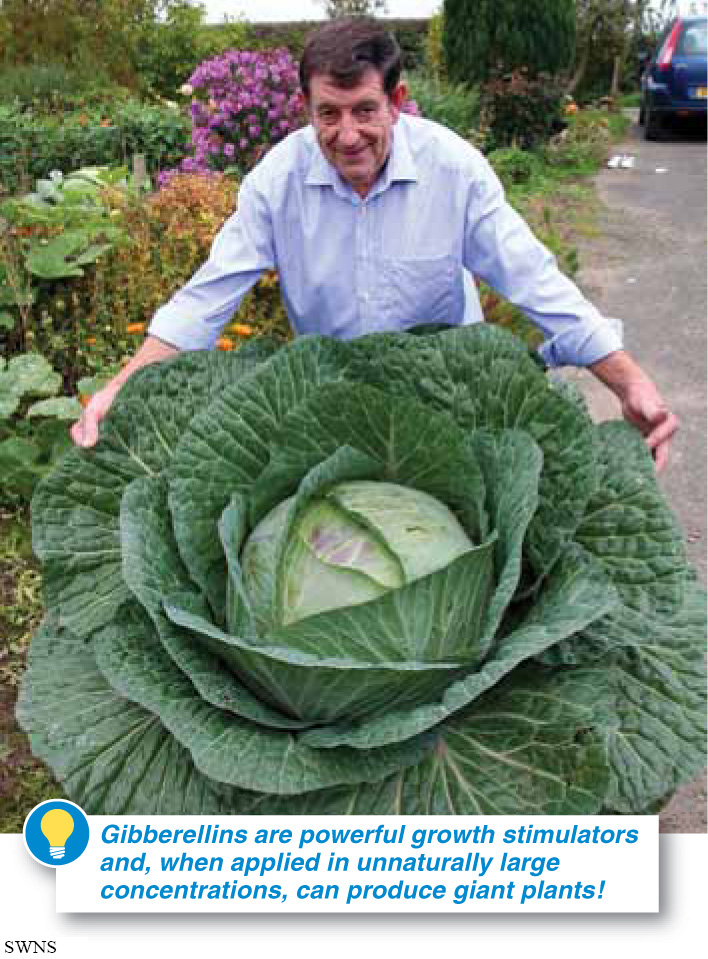
Gibberellins are a group of about 125 related hormones that regulate a plant’s growth, primarily by stimulating cell division and cell elongation. Gibberellins are produced in growing areas of a plant and are found throughout all plant structures. In some plants only two or three different gibberellins have been reported, while in others, more than four dozen have been reported. Gibberellins occur in the largest amounts in seeds but are also found in high concentrations in the shoot and root apical meristems. The areas that have the greatest concentrations of gibberellins experience the most dramatic growth.
772
Gibberellins have four main types of effects (FIGURE 19-10).
1. Initiating seed germination. Gibberellins within the seed stimulate the production of enzymes that break down and metabolize nutrients stored in the seed’s endosperm. When additional gibberellins are applied to seeds, whether by the plant biologist, farmer, or horticulturist, the seeds can more quickly and efficiently use their energy reserves to germinate.
2. Elongating stems. Some gibberellins increase stem elongation by spacing the nodes farther apart, thus increasing the distance between branch points.
3. Inducing blooming of flowers. Some plants do not produce flowers until the nights are sufficiently short or long (as we discuss in Section 19-
4. Enlarging fruits. One of the most important economic uses of gibberellins in the United States is the production of table grapes. When seedless grapes are sprayed with large amounts of gibberellins, the grapes grow larger, and due to the effect of gibberellins on stem elongation, there is more space between the grapes on the bunch. Both of these effects increase the attractiveness of a bunch of grapes to shoppers. (Normally, plants don’t ripen their ovary walls, producing fruits, unless they have set seeds and those seeds need to mature. After all, that would be a waste of energy.)
How can farmers grow radishes the size of beach balls?
Gibberellins are about as close to “miracle grow” chemicals as exist. If one type of gibberellin is sprayed on radish plants as they are growing, the radishes exhibit explosive growth. Whereas untreated radishes are smaller than a golf ball, gibberellin-

773
If plants grow more when they have greater amounts of gibberellins, why don’t all plants simply produce more gibberellins so they can outgrow other plants competing for sunlight? The answer is that, as in most aspects of biology, there are trade-
TAKE-HOME MESSAGE 19.5
Gibberellins are a group of about 125 related hormones, produced primarily in meristems and seeds, that regulate a plant’s growth, mainly by stimulating cell division and cell elongation.
What are the four main physiological effects of gibberellins?
Gibberellins speed seed germination, elongate stems, induce early blooming of flowers, and enlarge fruits.